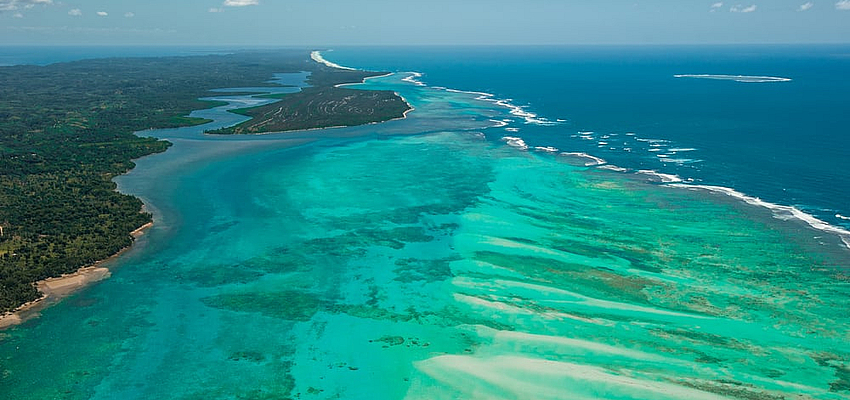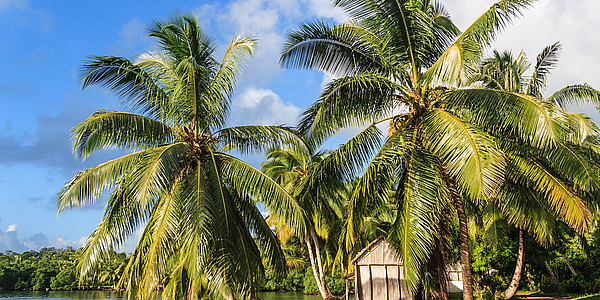


This paradise island offers more than just the chance to relax on the beach! So, if you're weary of the white sandy beaches edged with coconut trees, the crystal-clear waters and the picture-perfect tropical paradise is too perfect for your taste, you're bound to head off to explore the pirates' cemetery, the most popular site on Sainte-Marie. It can only be reached at low tide and takes just a 20 minute walk. This outing will also allow you to explore deserted coves with superb views of ocean life.
However, beyond the magic of coral reefs, its tropical forest and its stories of pirates, do you know why Sainte-Marie still puts Nosy Be in the shade?
To get to this little corner of paradise that makes you want to do a Robinson Crusoe, the humpback whales cover nearly 6,000 kilometres each year. Leaving the cold seas in summer, where they feed on fish and shrimps, they travel to the tropical regions to mate and have their young. In the Indian Ocean, they establish their main base camp in Antongil Bay (Maroantsetra) and the straits that separate Île Sainte-Marie from Madagascar, but also in the south around Anakao.
Madagascar has always paid homage to these great travellers of the oceans, which are more than respected in Malagasy tradition. The inhabitants of Sainte-Marie even celebrate their arrival with a festival known as Zañaharibe, meaning "Great God".

Humpback whales have appeared in stories since the dawn of time, both intriguing and frightening. The mystery that surrounds this odd creature, with its long pectoral fins, may have contributed to the construction of the myth of sea monsters and mermaids who charm sailors with their hypnotic song, dragging them down to the watery abyss.
Known for their acrobatic feats and spectacular jumps several metres out of the water, these sea mammals measure between 10 and 15 metres in length and weigh between 25 and 30 tonnes and are often tracked by wildlife photographers. However, its their unique and melodious song, particularly during the mating season, that cannot fail to amaze and move anyone who hears it.
It's part of the mating ritual or the marking of territory and accompanies the whale ballets with mournful notes at a highly variable volume and frequency, with phrases repeated throughout a series of sequences.
The sounds which they produce, both those audible to the human ear and infra-sounds, allow whales to communicate with each other over distances of more than two hundred kilometres and to find their way from one ocean to another!
Humpback whales are often curious about their surroundings and willingly approach the boats which have taken advantage of their sociability to develop a real business.
Now, thanks to the Mayotte-based charity, Megaptera and the Sainte-Marie tourist operators' group, a code of good conduct was adopted in 2001 and a partnership project was signed on the initiative of the Madagascan Ministry of Tourism to monitor the protection of these sea mammals and their environment.
Many different actions has been carried out as part of this community whale-watching eco-tourism project, from the theoretical and practical training of the officially-approved tourist guides who accompany tourists on the whale-watching trips, to the application of the code of good conduct to which very many diving clubs and tourism operators have adhered.
In addition, amongst the rules to be obeyed, in particular during the mating season and the period when the young whales are born, you should remember the essentials, such as the minimum safe distance for observation, the maximum boat speed when approaching the whales, as well as the length of the trip, and above all the fact that it is strictly forbidden to touch these mammals!
if you follow these rules, you will understand better the need to establish contact gradually and respectfully. Your photo reportage will be no less successful, as long as you remain calm and patient. Make sure your photographic equipment is of sufficient quality because wildlife photography can't be impovised, particularly not on a boat!